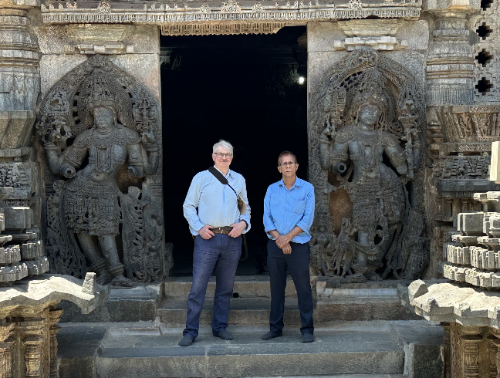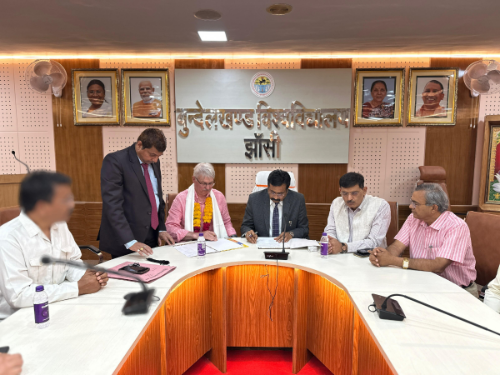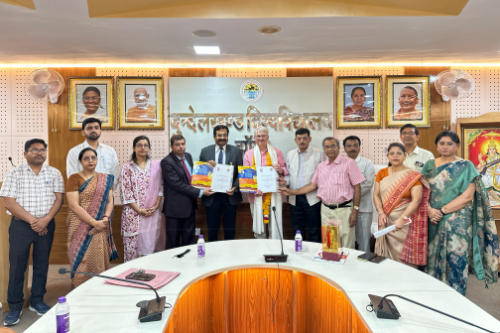– The history of our contacts with Bundelkhand University began in 2009 with collaboration in the field of geology. As it happens, the territory of this Indian province and Karelia are geologically very similar.
The array of ancient rocks is nearly the same here and there. This provides opportunities for investigating the fundamental problems of the early Earth's evolution and identifying the most significant events. At the time of our first Russian-Indian project, the territory of Karelia was a benchmark for studying the Bundelkhand Craton, and we made some important discoveries: we located greenstone belts there, estimated their age, and proposed modern models of lithosphere development. This has significantly changed the world's ideas about this craton, – shared Alexander Slabunov, KarRC RAS Deputy Director General, Head of Precambrian Geology and Geodynamics Laboratory of the Institute of Geology KarRC RAS.

Professor V. Hegde and A. Slabunov visiting geological and historical heritage sites in Karnataka Province, India
Geologists' contacts with their Indian colleagues continue. During his working trip to India, Alexander Slabunov visited a number of scientific and educational organizations in northern and southern provinces, and together with his Indian colleagues examined some important geological sites. The materials they have gathered may form the basis for new academic papers, in addition to several dozens published previously. One of the most recent papers was published in 2024 in the International Geology Review. Its topic is the study of banded iron formations of the Bundelkhand Craton. Such formations are also well known in Karelia - such is the ore of the Kostomuksha deposit.

Alexander Slabunov with Indian colleagues on a trip to geological sites in the Bundelkhand Craton
At the same time, Karelian Research Center continues to develop cooperation with BRICS countries. As part of this process, the idea came up to scale up the cooperation with the Bundelkhand University to other scientific areas.
– Bundelkhand University is a large organization comprising many research institutes. We realized there are many intersections with our other divisions as well. There are some common tasks related to climate change analysis, carbon research, water resources research, application of mathematical and telecommunications knowledge, some areas of biology and economics, – remarked Alexander Slabunov.
One of the specific topics that we have started discussing is tourism management, including geotourism. Both India and Karelia have globally unique geological sites which have the potential to attract tourist traffic. This sphere is of interest to specialists in geology and economics.
– The Indian party is also interested in training postgraduate students together with Russia. The feasibility of such activities needs to be assessed, and the KarRC RAS Doctoral School Office is already studying the relevant legal framework, – added KarRC RAS Deputy Director General.

Rector of the Bundelkhand University, Professor Mukesh Pandey and KarRC RAS Deputy Director General Alexander Slabunov signing the MoU. 18 March 2025, Jhansi, India
The next steps under the MoU will be to introduce scientists from our two organizations to each other and find specific common points of interest. The next stage will be the participation of specialists in conferences. In particular, in August the Institute of Geology will organize a scientific conference on ancient rock studies, the Precambrian Summit, for which specialists from India have already registered. In September, KarRC RAS is going to host an expert meeting to promote networking among scientists from BRICS countries, to which colleagues from the Bundelkhand University will also be invited.
We remind that on February 21, 2025 a Memorandum of Understanding was signed between KarRC RAS and Chanakya University, Bangalore, India. Both documents are meant to leverage scientific ties and help find solutions to crucial theoretical and applied problems.




